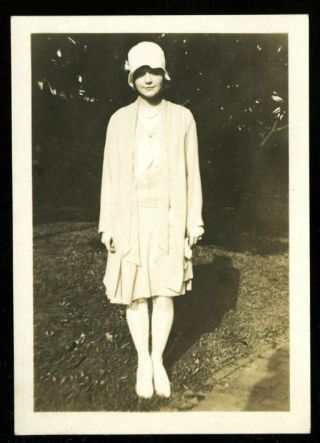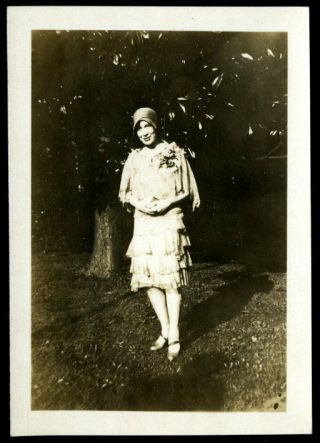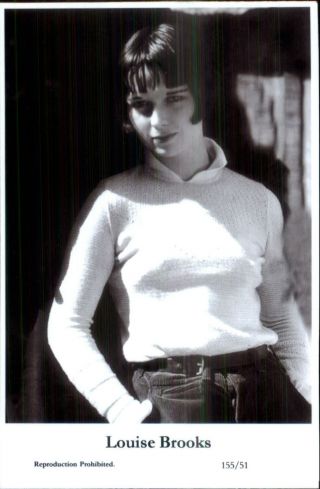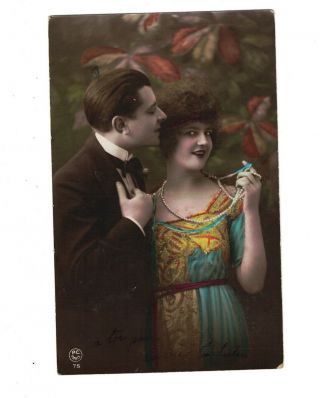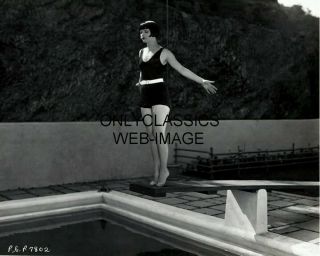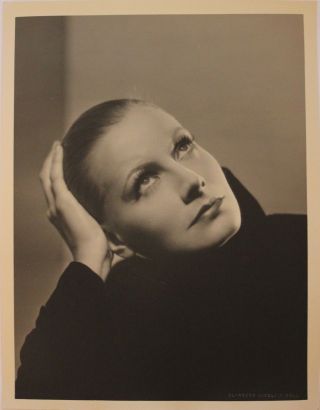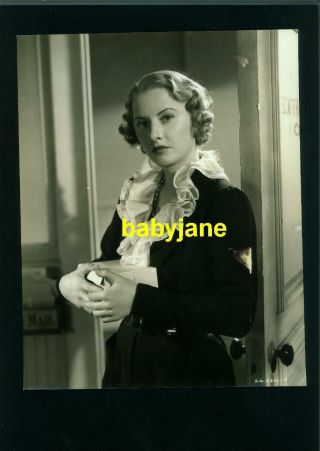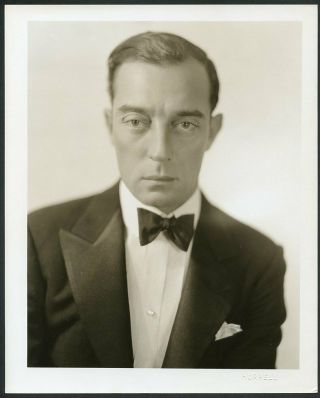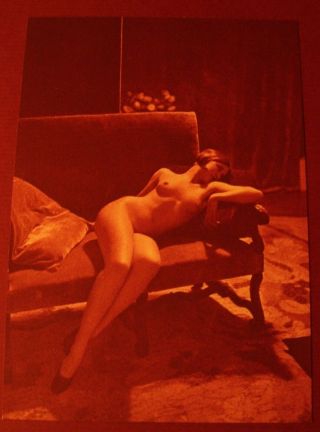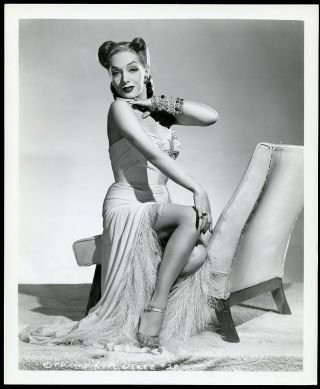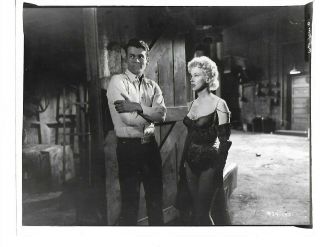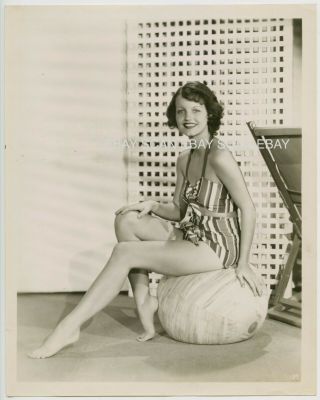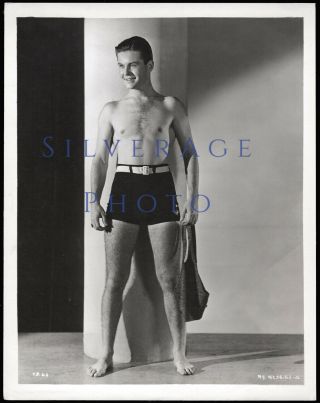1920s Flapper Icon Louise Brooks Roaring Twenties Glamour Photograph
Item History & Price
An actress and dancer during the 1920s and 1930s, Brooks is regarded today as a Jazz Age icon and as a flapper sex symbol due to her bob hairstyle that she helped popularize during the prime of her career.
Photograph measures 6.5" x 8.5" on a glos...sy, single weight paper stock with ink stamp on verso.
Guaranteed to be 100% vintage and original from Grapefruit Moon Gallery.
More about Louise Brooks:
With exotic good looks and a bobbed hairstyle she originated, actress Louise Brooks made a number of films during the silent era and the advent of sound, only to drop off the public radar after adamantly refusing to bow down to studio pressures. Brooks started her showbiz career as a dancer for Denishawn and the Ziegfeld Follies, the latter of which led to a brief romance with silent star Charlie Chaplin, before making her film debut in 1925. She graduated to leading roles with "It's the Old Army Game" (1926), "A Girl in Every Port" (1927) and "Beggars Life" (1928), but was unable to achieve stardom. After leaving Hollywood in 1928, Brooks settled in Germany where she made her three best pictures, "Pandora's Box" (1929), "Diary of a Lost Girl" (1929), and "Prix de Beauté" (1930). The first introduced audiences to her most iconic character, Lulu, a wantonly sexual woman who brings about destruction to herself and those who love her. "Pandora's Box" garnered Brooks international stardom that ultimately proved short-lived. She returned to Hollywood in 1931 and landed several movies, but again struggled. Brooks made her last movie, "Overland Stage Raiders" (1938), before going back East, where her decadent lifestyle almost led to suicide. With the help of film curator James Card, Brooks found a second life as a writer and eventually published a number of witty essays, culminating in her memoirs Lulu in Hollywood (1982) and a rediscovery of her importance to the silent era of cinema.
Born on Nov. 14, 1906 in Cherryvale, KS, Brooks was raised by her father, Leonard, a lawyer who barely involved himself in his children's lives, and her mother, Myra, who harbored artistic ambitions. Brooks later claimed that when she was nine years old, she was sexually abused by a neighbor - an event that permanently affected her romantic relationships, particularly with men. When she was 15, Brooks moved to New York City, where she began her entertainment career with the renowned Denishawn Dance Company that boasted among its members at the time a young Martha Graham. After three years, however, Brooks' temper and haughtiness led one of the troupe's founders, Ruth St. Denis, to fire her. But Brooks quickly found work dancing with the George White Scandals, and by 1925 was a featured dancer with the Ziegfeld Follies on Broadway. Her role in the famed show attracted the attention of silent film star, Charlie Chaplin, with whom she had a brief affair, and Paramount Pictures, which signed Brooks to a five-year contract.
Brooks began her screen career with an uncredited role as a gun moll in the silent drama, "The Street of Forgotten Men" (1925), but soon found herself taking the lead in "The American Venus" (1926), "Girl from Coney Island" (1926) and "It's the Old Army Game" (1926), starring W.C. Fields. Also in 1926, Brooks married the director of the Fields movie, Edward Sutherland, but the following year she fell head-over-heels for businessman and future owner of the Washington Redskins, George Preston Marshall, a pivotal moment in her young life. Meanwhile, Brooks struggled in lackluster films like "Rolled Stockings" (1927), "The City Gone Wild" (1927) and "A Girl in Every Port" (1927). She delivered her best performance of the era as a girl on the run with a rail-riding hobo (Wallace Beery) in "Beggars of Life" (1928), but found herself on the outs with Hollywood when legendary Paramount executive, B.P. Schulberg, denied Brooks a raise, leading the actress to steadfastly refuse to work. Her defiance was unorthodox and ahead of its time, but left her adrift.
Instead, Brooks - who by 1928 had divorced Sutherland because of her love for Marshall - had gone across the pond to take up residence in Germany. Paramount offered her $10, 000 to return to the fold and dub in sound for her silent feature, "The Canary Murder Case" (1929), but again she snubbed the studio. Her leaving Hollywood was a fortuitous event, for it allowed Brooks to play her most iconic role, Lulu, in the German-made "Pandora's Box" (1929), directed by Georg Wilhelm Pabst. Seductive, wantonly sexual and unabashedly careless - much like the actress in real life - Lulu brought about ruin both to herself and to those who love her, as she explores the decadent Weimer republic. With her bobbed haircut and smoking sensuality, Brooks finally gained stardom. Brooks worked again with Pabst on the controversial "Diary of a Lost Girl" (1929), and moved on to Italian director Augusto Genina for "Prix de Beauté" (1930). Both films were heavily censored for their frank portrayals of sexuality, but they also earned Brooks another look from Hollywood, which invited her back into the fold - albeit in a more diminished capacity - in 1930.
Upon her return to Hollywood, Brooks was given roles in comedies like "God's Gift to Women" (1931), directed by Michael Curtiz, and "It Pays to Advertise" (1931), starring Carole Lambert. Following the short comedy, "Windy Riley Goes Hollywood" (1931), which was directed by fellow outcast Fatty Arbuckle under the pseudonym William Goodrich, Brooks found herself largely ignored by the viewing public. She was offered a major role in James Cagney's "The Public Enemy" (1931), but turned it down. The role instead went to Jean Harlow. Meanwhile, Brooks struggled to find roles, though it probably mattered little due to her hatred of Hollywood. Later in the decade, she was relegated to a handful of B-movies, including the Western "Empty Saddles" (1937), the crime drama "King of Gamblers" (1937) and the musical "When You're in Love" (1937). Brooks made her last appearance on film in the Western "Overland Stage Raiders" (1938), which starred a pre-stardom John Wayne. Brooks later claimed that she took on such a thankless role because she needed the money. By this time, her reputation for drinking too much and sleeping with a wide array of men afforded Brooks little respect, and eventually led to her leaving town.
With her film career over, Brooks briefly returned to Wichita, KS, where she tried and failed to open a dance studio. She moved back to New York and worked as a radio actor and gossip columnist until finally landing a job as a salesclerk at Saks Fifth Avenue. She later admitted in her autobiography that at the time she discovered the best way to make money was to work as a call girl, which apparently led to thoughts of suicide. A notorious spendthrift, Brooks filed for bankruptcy in 1932, but managed to survive thanks to a small monthly stipend provided by former lover, William S. Paley, founder of CBS. Eventually, she fell off the radar completely and lived her life as a near recluse. But in the 1950s, she was rediscovered by French film buffs and enjoyed a resurgence in popularity. The critical rediscovery of her work began during the "60 Ans de Cinema" exhibition at the Musee National d'Art Moderne in 1955, when film archivist Henri Langlois issued the rallying cry: "There is no Garbo! There is no Dietrich! There is only Louise Brooks!" Meanwhile, James Card, film curator for the George Eastman House, persuaded Brooks to move upstate to Rochester, NY in order to be closer to the museum. With Card's help and encouragement, Brooks began a second career as a film writer.
In 1979, fellow writer Kenneth Tynan wrote a long profile, "The Girl with the Black Helmet, " for The New Yorker, the title of which derived from her famed black bobbed hair style that remained popular decades after she originated it. The article was later turned into a stage play and helped shine the spotlight on Brooks in the waning years of her life. Brooks later published her memoirs, Lulu in Hollywood (1982), in which was unabashed in its depiction of her life and the lives of her former contemporaries in Hollywood. Though a recluse for the last decades of her life, Brooks relented to the occasional interview, appearing in the documentaries "Memories of Berlin: The Twilight of Weimar Culture" (1976) and "Hollywood" (1980). She also submitted herself for print interviews and gave accounts of her many dalliances, including with some high-profile women. Brooks never considered herself a lesbian, but claimed to have enjoyed their company on a few occasions and cited Greta Garbo and Pepi Lederer as lovers. Having achieved a degree of popularity late in her life, Brooks still remained something of a recluse. She lived alone with little friends or money in her one-bedroom apartment in Rochester, where she was found dead on Aug. 8, 1985 from a heart attack. She was 78 years old, and had previously suffered from arthritis and emphysema.
TCM | Turner Classic Movies Biography By: Shawn Dwyer



